
(date unknown)
Eugen von Kahler, originally Eugen Kohn (6 January 1882, Prague - 13 December 1911, Prague) was a Bohemian-German painter, graphic artist and writer of Jewish ancestry. Most of his works are in the Expressionist style.

Eugen von Kahler, originally Eugen Kohn (6 January 1882, Prague - 13 December 1911, Prague) was a Bohemian-German painter, graphic artist and writer of Jewish ancestry. Most of his works are in the Expressionist style.
He came from a family of wealthy industrialists who changed their name from Kohn to Kahler in 1894. From 1901 to 1905, he studied at the Academy of Fine Arts, Munich, with Heinrich Knirr and Franz von Stuck. During this time, he also took private lessons from Hugo von Habermann. [1]
He was diagnosed with tuberculosis in 1900 and his education was interrupted by numerous stays in sanatoria. [1] Despite this, he was able to travel to Paris in 1907, where he took a course in plein aire painting at a private school and copied works at the Louvre. He was a regular patron at the Café Du Dôme, [2] where his associates included Friedrich Ahlers-Hestermann, Oskar Moll, Jules Pascin, Elisabeth Epstein and Sonia Terk. His exhibitions included several showings at the Salon d’Automne and the Salon des Indépendants.
In an effort to alleviate his suffering, he took a trip to Egypt in the summer of 1908, seeking a drier climate. [1] The following year, he visited Tunisia and Algeria, which inspired him to create numerous works with Orientalist themes; some of which were shown at an exhibit by the Neue Künstlervereinigung München in 1911. [2] That same year, his father was knighted and everyone in his family became entitled to attach "von" to their names. This was followed by his first solo exhibition at the Moderne Galerie, operated by the art collector, Heinrich Thannhauser.
Success was short-lived, however, as he succumbed to his illness two months later. A few days after his death, two of his works were displayed at the first exhibition of Der Blaue Reiter. [1] He was interred at the New Jewish Cemetery. His estate was managed by his cousin, the writer Erich von Kahler, who discovered a large number of poems. They were published in 1914 by Poeschel & Trepte, as a limited edition, under the title Sinnen und Gesang (roughly, Feelings and Song). [3]

František Kupka, also known as Frank Kupka or François Kupka, was a Czech painter and graphic artist. He was a pioneer and co-founder of the early phases of the abstract art movement and Orphic Cubism (Orphism). Kupka's abstract works arose from a base of realism, but later evolved into pure abstract art.
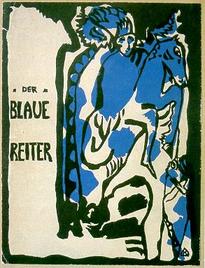
Der Blaue Reiter is a designation by Wassily Kandinsky and Franz Marc for their exhibition and publication activities, in which both artists acted as sole editors in the almanac of the same name, first published in mid-May 1912. The editorial team organized two exhibitions in Munich in 1911 and 1912 to demonstrate their art-theoretical ideas based on the works of art exhibited. Traveling exhibitions in German and other European cities followed. The Blue Rider disbanded at the start of World War I in 1914.

Max Liebermann was a German painter and printmaker, and one of the leading proponents of Impressionism in Germany and continental Europe. In addition to his activity as an artist, he also assembled an important collection of French Impressionist works.
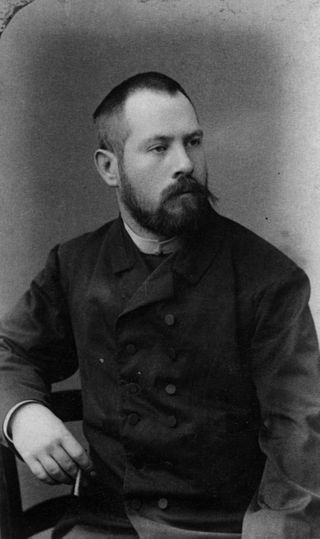
Lovis Corinth was a German artist and writer whose mature work as a painter and printmaker realized a synthesis of impressionism and expressionism.

Eduard Julius Friedrich Bendemann was a German-Jewish painter.

The Neue Künstlervereinigung München (N.K.V.M.), was an Expressionism art group based in Munich. The registered association was formed in 1909 and prefigured Der Blaue Reiter, the first modernist secession which is regarded as a forerunner and pathfinder for Modern art in 20th-century Germany.

Johann Michael Ferdinand Heinrich Hofmann was a German painter of the late 19th to early 20th century. He was the uncle of the German painter Ludwig von Hofmann. He was born in Darmstadt and died in Dresden. He is best known for his many paintings depicting the life of Jesus Christ.

Acad. Prof. Dr. Honoris Causa Ion Irimescu was one of Romania's greatest sculptors and sketchers as well as a member of the Romanian Academy. In 2001 he was awarded the Prize of Excellence for Romanian Culture. He is often referred to as the "patriarch of Romanian art and sculpture".

The Berlin Secession was an art movement established in Germany on May 2, 1898. Formed in reaction to the Association of Berlin Artists, and the restrictions on contemporary art imposed by Kaiser Wilhelm II, 65 artists "seceded," demonstrating against the standards of academic or government-endorsed art. The movement is classified as a form of German Modernism, and came on the heels of several other secessions in Germany, including Jugendstil and the Munich Secession.

Eugen Gustav Dücker was a Baltic German painter, in the Romantic atyle, associated with the Düsseldorfer Malerschule.

Franz Defregger was an Austrian artist known for producing genre art and history paintings set in his native county of Tyrol.

Malva Schalek, aka Malvina Schalková, was a Czech-Jewish painter. Trained in Prague, she went on to work in Vienna as a painter. From 1942 to 1944 she was imprisoned in the Theresienstadt concentration camp. In 1944 she was moved to the Auschwitz concentration camp, where she was murdered. Many of her works are held in the Ghetto Fighters' House in Israel.
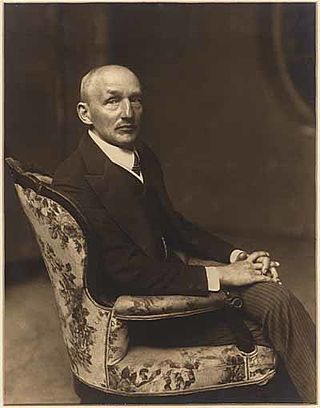
Heinrich Knirr was an Austrian Empire-born German painter, known for genre scenes and portraits, although he also did landscapes and still-lifes. He is best known for creating the official portrait of Adolf Hitler for 1937 and is the only artist known to have painted Hitler from life.

Richard Alfred Eugen Jettel was a painter, producing mainly landscapes. He was from Austria-Hungary. He studied at the Vienna Academy and moved to Paris in 1873, before moving back to Vienna in 1897 and serving as a co-founder of the Vienna Secession. He was made a Knight of the Légion d'honneur in 1898.

Adolf Friedrich Wilhelm Wachenhusen was a German landscape artist, draftsman and etcher. The focus of his work was on the countryside of his home region, Mecklenburg.

Heinrich Rauchinger (1858–1942) was a Kraków-born history painter and portrait painter.
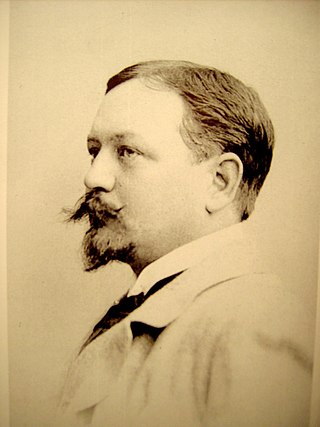
Friedrich Gustav August Julius Philipp Rudolf von Wille, known as Fritz, was a German landscape painter and art professor; associated with the Düsseldorf School.

Große Berliner Kunstausstellung , abbreviated GroBeKa or GBK, was an annual art exhibition that existed from 1893 to 1969 with intermittent breaks. In 1917 and 1918, during World War I, it was not held in Berlin but in Düsseldorf. In 1919 and 1920, it operated under the name Kunstausstellung Berlin. From 1970 to 1995, the Freie Berliner Kunstausstellung was held annually in its place.
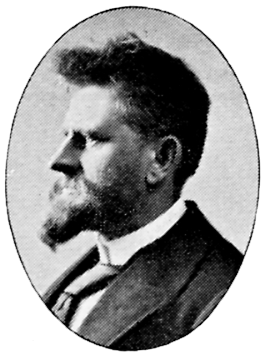
Olof August Andreas Jernberg was a German landscape and marine painter of Swedish ancestry; associated with the Düsseldorfer Malerschule.

Henriette Mankiewicz was an art embroiderer from Austria-Hungary.